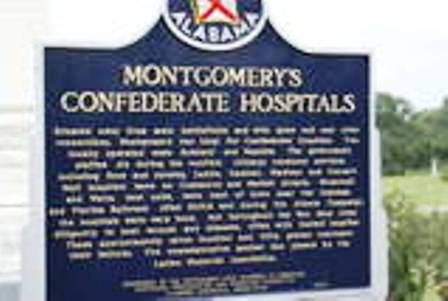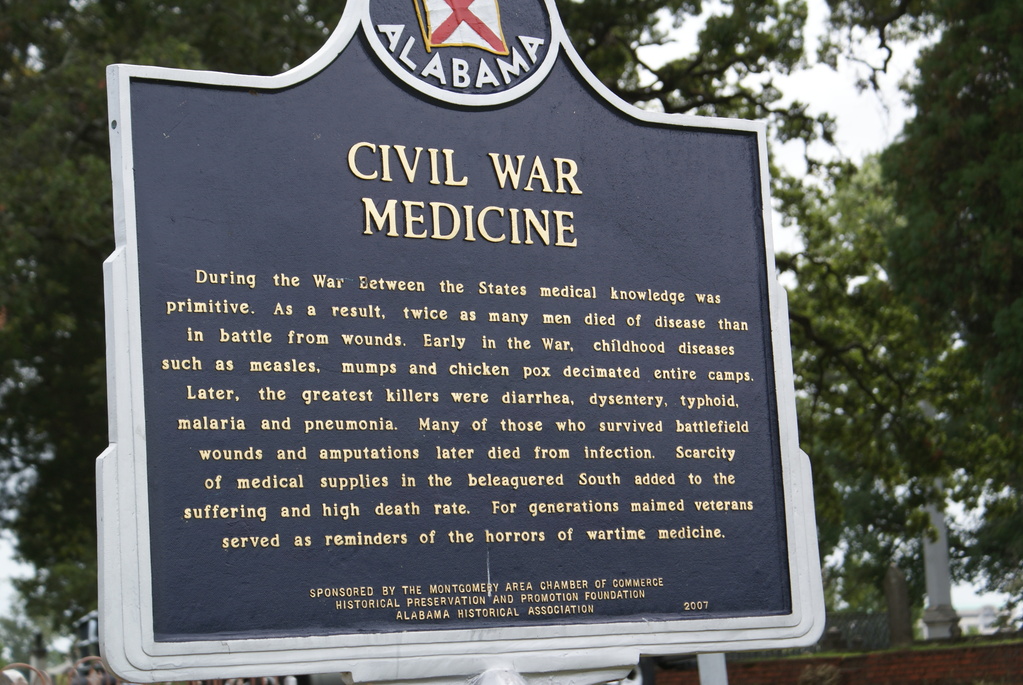Oakwood Cemetery, Montgomery, Alabama
Oakwood Cemetery is Montgomery’s most famous cemetery and it is the city’s oldest cemetery. The remains of four Alabama governors, three Confederate generals and numerous Montgomery mayors are among over 100,000 people buried on these 150 acres. It is a combination of five cemeteries. Headstones for approximately 750 Confederate soldiers, a monument and a chapel were built at Oakwood Cemetery. The Chapel/Pavilion is still used today for the Confederate Memorial Day program each April 26th when a wreath is placed at the Confederate monument in the cemetery. The Historical Marker unveiled in 2007 is an important addition to this historical cemetery.
The Ladies' Memorial Association of Montgomery wishes to thank these two persons for the wording of the texts of the historical marker:
Dr. Norwood A. Kerr, Alabama Historical Association Marker Committee Department of Archives and History
Mrs. Mary Ann Neeley, Historian, author, speaker
Text for one side of the marker:
Civil War Medicine
During the War Between the States medical knowledge was primitive. As a result, twice as many men died of disease than in battle from wounds. Early in the War, childhood diseases such as measles, mumps and chicken pox decimated entire camps. Later, the greatest killers were diarrhea, dysentery, typhoid, malaria and pneumonia. Many of those who survived battlefield wounds and amputations later died from infection. Scarcity of medical supplies in the beleaguered South added to the suffering and high death rates. For generations maimed veterans served as reminders of the horrors of wartime medicine.
Sponsored by the Montgomery Area Chamber of Commerce, Historical Preservation and Promotion Foundation, Alabama Historical Association 2007
Text for the other side of the marker:
Montgomery’s Confederate Hospitals
Situated away from main battlefields and with good rail and river connections, Montgomery was ideal for Confederate hospitals. Two locally operated were Soldiers’ and Wayside. The government staffed six during the conflict. Citizens rendered services including food and nursing. Ladies, General, Madison and Concert Hall hospitals were on Commerce and Market streets. Stonewall and Watts, tent units, were west of town near the Alabama and Florida Railroad. After Shiloh and during the Atlanta Campaign, the hospitals were very busy, but throughout the War they tried diligently to heal wounds and diseases, often with limited supplies. These approximately seven hundred and fifty graves represent their failures. The commemorative marker was placed by The Ladies' Memorial Association.

